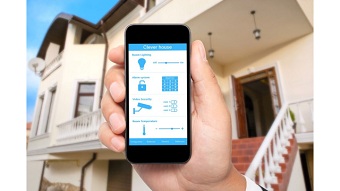Tougher rules and stiffer penalties have been partly credited with helping with a dramatic decrease in false burglar alarms in the Dayton, Ohio, area, which according to the Dayton Police Department, is one of the biggest drains on police resources. But a major factor has been the spread of smart home security systems that are far less likely to trigger an unnecessary police response, officials said.
False alarms aren’t just irritating — they take police away from real emergencies, risk lives and make alarm systems less credible, the city said. “It’s not only the cost of responding — it’s opportunity lost, because what else could you be spending your time on that would contribute to improved safety,” said Dayton police Chief Richard Biehl. “There’s a cost of officers going to something that doesn’t require a police presence.” Dayton police responded to 2,915 false burglar alarms in 2017. That’s down 6 percent from 2016 and 42 percent from 2013. In 2001, the police department received about 13,820 burglar alarm calls.
However, officials say alarms still waste a lot of the officers’ time. Police have handled about 2,265 false alarms so far this year.
False alarms tie up police resources because it can take up to 20 minutes to respond, investigate and clear each call, said Cara Zinski-Neace, a spokeswoman with the Dayton Police Department. Police have to check every alarm call to potentially stop criminal activity like burglary or breaking and entering, Zinski-Neace said. Two officers have to respond to every alarm. Studies suggest only a small fraction of burglar alarms are for real crimes.
The Dayton Daily News found about 97 percent of the intruder alarms in 2013 were false alarms, meaning they were caused by something other than criminal activity, like weather, malfunction or human error. The city fines property owners responsible for multiple false alarms.
Now, fines kick in at $50 when a property has three false alarms in a 12-month period. The fine increases to $250 on the seventh false alarm and Dayton police also stop responding to the address for alarm calls. More than 140 properties have been put on the police department’s “Do Not Respond” list since 2011. Fines have definitely helped, but one of the main reasons false alarms have plummeted is because of improved and more affordable technology, said Chief Biehl.
Internet-based security systems have motion detectors that send notifications and alerts to residents and property owners, Biehl said. People can monitor their homes anywhere using cameras that live stream to their mobile devices. “People will verify — they have a camera on their phone — whether it’s a person who’s supposed to be there,” Biehl said. With a click of a button on their phone, people can arm or disarm their home security systems. They can control their door locks using apps. They can install video doorbells and indoor and outdoor surveillance cameras. Motion sensors can turn on the lights and activate cameras to record video. Residents can customize their security systems so they aren’t accidentally triggered by welcome and expected visitors like dog walkers and house or baby-sitters








